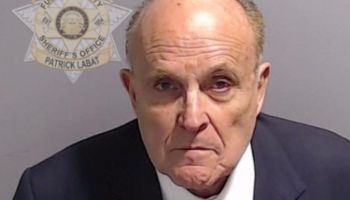The 12 p.m. ET deadline for Occupy DC protestors camping out in McPherson Square passed with no violence, amid some raucous noisemaking and the erecting of a blue tarp from an estimated 100 occupiers, according to the Washington Post. Only one arrest has been reported, as of this afternoon.
SEE ALSO: How To Get Free Wifi Anywhere!
What happened in the national’s capital is in stark contrast to the violence and mass arrests that took place in Oakland, with a reported 400 occupiers hauled off to jail. As authorities seek to clamp down on protests, campsites and sit-ins, what is next for the Occupy movement and will they continue to show resolve for their cause?
While freedom of speech does allow for the protestors to make their stand, it doesn’t call for the destruction of property and clashing with police, as was reported in Oakland. The various scuffles police officials have had with occupiers nationwide from New York to Florida and beyond have made confrontation the centerpiece of the movement.
To outsiders, the Occupy movement appears to be dwindling in direction and importance as police and public park officials make wide sweeps to remove protestors from their posts. Solidarity for the movement continues to be exhibited by marches, shouting matches and continued defiance. However, forceful removal and expected resistance remain as the hallmarks of protests.
Protest politics is not a new concept, but the unique nature of the Occupy movement is its anti-establishment narrative and sustainable global reach. Since last September’s “Occupy Wall Street” protests in New York, the movement has swelled to nearly every large U.S. city and many international capitals, after initially taking root in Canada. Couched as a rallying cry against social and economic equality, the Occupy movement, at its core, seemed to be in direct response to a lack of jobs and equal pay. It has since morphed into a fight for human rights and civil liberties, continually morphing itself almost weekly since last fall.
Elected officials, especially those in Washington, are painfully aware of the Occupy movement and some consider it a political eyesore.
Republican congressman Daniel Issa pondered in session last week about the legality of the movement camps on federal lands. The hearing found National Park Service director Jonathan Jarvis under fire for allowing the occupiers to camp on the grounds by way of a loophole that said movement protestors can legally maintain 24-hour vigils, but not camp overnight. Maryland’s Rep. Elijah Cummings praised Jarvis for his commitment to the law, although Republican lawmakers have balked openly.
Reports from both California and Washington appear to show that protestors will undergo even more drastic measures, including sleeping on sidewalks and further attempts to occupy vacant buildings. But as arrests pile up and charges begin to swell, what will be left of the movement if there’s nobody on the streets to exact their will? Occupiers have submitted demands and proposals in the past. But without a true nationwide representative, the movement has not had the ear of lawmakers beyond what has been generally seen.
If the Occupy movement seeks to reach beyond protests and displaying varying levels of public unrest, the occupiers must find a way to articulate their cause in a palatable way to establish a civil rapport with the corporations and heads of government they are vocally and visibly critical of. Protests and planned actions certainly have their merit. However, the Occupy movement may stand a better chance of presenting their cause in the faces of their opponent with measured grace instead of bombast. That said, the movement should be applauded for not losing significant strength in the face of strong opposition from the authorities. The hope going forward is that one day, the protestors can be heard without resorting to tactics that could ultimately spell their doom.
SEE ALSO:















